Style Is Part of Faith For These Muslim Women This Ramadan

Courtesy of subjects
Believers is a series running throughout April, examining different facets of faith and religion among young people.
</cite>](https://s.yimg.com/ny/api/res/1.2/tSNJCTLyvOyjWQ9hI.KxYA--/YXBwaWQ9aGlnaGxhbmRlcjt3PTk2MDtoPTI0MA--/https://media.zenfs.com/en/teen_vogue_128/6e330cc6735d22584299951fdd6233e9)
Hadeel Khatib has had fond memories of Eid for as long as she can remember. “We would see family and get dressed up in our new clothing,” she said. “We wore these outfits that we bought weeks in advance, and made our rounds greeting family and neighbors.”
Eid Al-Fitr, or the Festival of Breaking the Fast, is an Islamic holiday that commemorates the end of the holy month of Ramadan. During Ramadan, Muslims fast from sunrise to sunset, and aim to spend the month deep in self-reflection and heightened subservience to God, among many other practices. Eid follows as a time where believers are able to revel in festivities and blossom within the realms of their identities; it is the culmination of everything the believer has learned throughout their sawm (fast). While Eid is different for many, the heart of the celebration remains the same: believers are to bathe in their spiritual renewal, and seek to extend tenderness towards their community.
As Eid is marked by sweet morsels, lanterns, and camaraderie, it is also celebrated with quality attire. Jokingly known as the “Muslim Met Gala” within respective circles, Eid is a time when believers adorn themselves in the finest clothing and spray the most exquisite perfumes. It is recognized that presenting your best self on Eid is sunnah (Islamic tradition) and honors the way of the prophet Muhammad. This tenet is a highlight for many, particularly Muslim women who find immense joy in the intersection of their identities and faith.
This Eid, Teen Vogue spoke with five women about what the holy day means to them, and how it helps them celebrate their identities.
Khatib, who is half Lebanese and half Palestinian, cites the stark difference between celebrating Eid in her homeland versus in America. “Community back home is definitely different. When celebrating in your home country, it really gives you a feel that you’re observing a holiday and everyone is giving thanks and remembering God — it’s a very beautiful sentiment,” said Khatib. “In the States, there’s a lot more time management that has to be done since everyone isn’t in one big neighborhood — but you forget all about that once you’re able to meet up with your favorite people. Everyone still tries to keep their traditions alive, and I think it’s wonderful. That togetherness on a holy day makes you feel like home is never too far.”
To remember that community, Khatib uses her clothing to maintain closeness. “There’s a lot of intention behind the clothes we pick out, they’re not just random pieces,” she said. “What we choose allows us to represent where we’re coming from. You’re really able to see how different people around you express themselves based on their henna or abaya style. To me, it’s not about what you wear, but why you’re wearing it. On Eid, when I put on clothing that resonates the most with my background, I feel more like myself and less of a character playing a role.”
“Regardless of wherever I am in the world, remembering that I’m celebrating a special holiday with people who share my faith is something that always grounds me and reminds me that I’m not alone. You’re never truly disconnected from where your roots lie.”
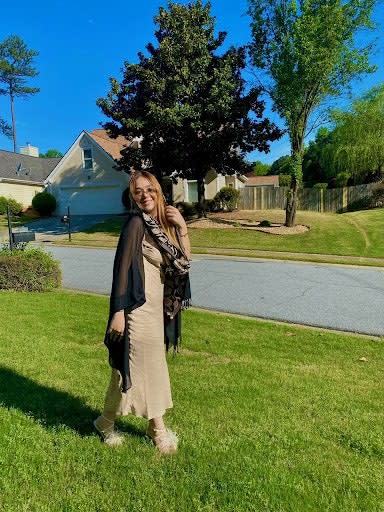
For Iraqi Kurdish-Assyrian artist Maryam Salih, preparations are made a week in advance through curated clothing and lending a helping hand.
“Before Eid, I prepare by having my outfit ready at least a week before, and send out any money that I can back home towards those in need. This is called Fitrana,” Salih explains. “Being half-Kurdish, I sometimes wear my traditional clothing during the day as we get together with family and go out.”
“On the morning of Eid, I typically wake up to a ton of traditional foods made by my parents that consist of rice and bean stew, Sheikh el Mahshi (eggplants & zucchini stuffed with meat), clotted cream with honey, tea, and so much more,” Salih said. “Each country and ethnicity incorporates different items on the table, but as an Iraqi Kurdish Assyrian, this is what our traditional foods tend to look like.”
Through faith and engaging with her creative outlets, Salih is able to look inward and feel most like herself, especially during times of worship.
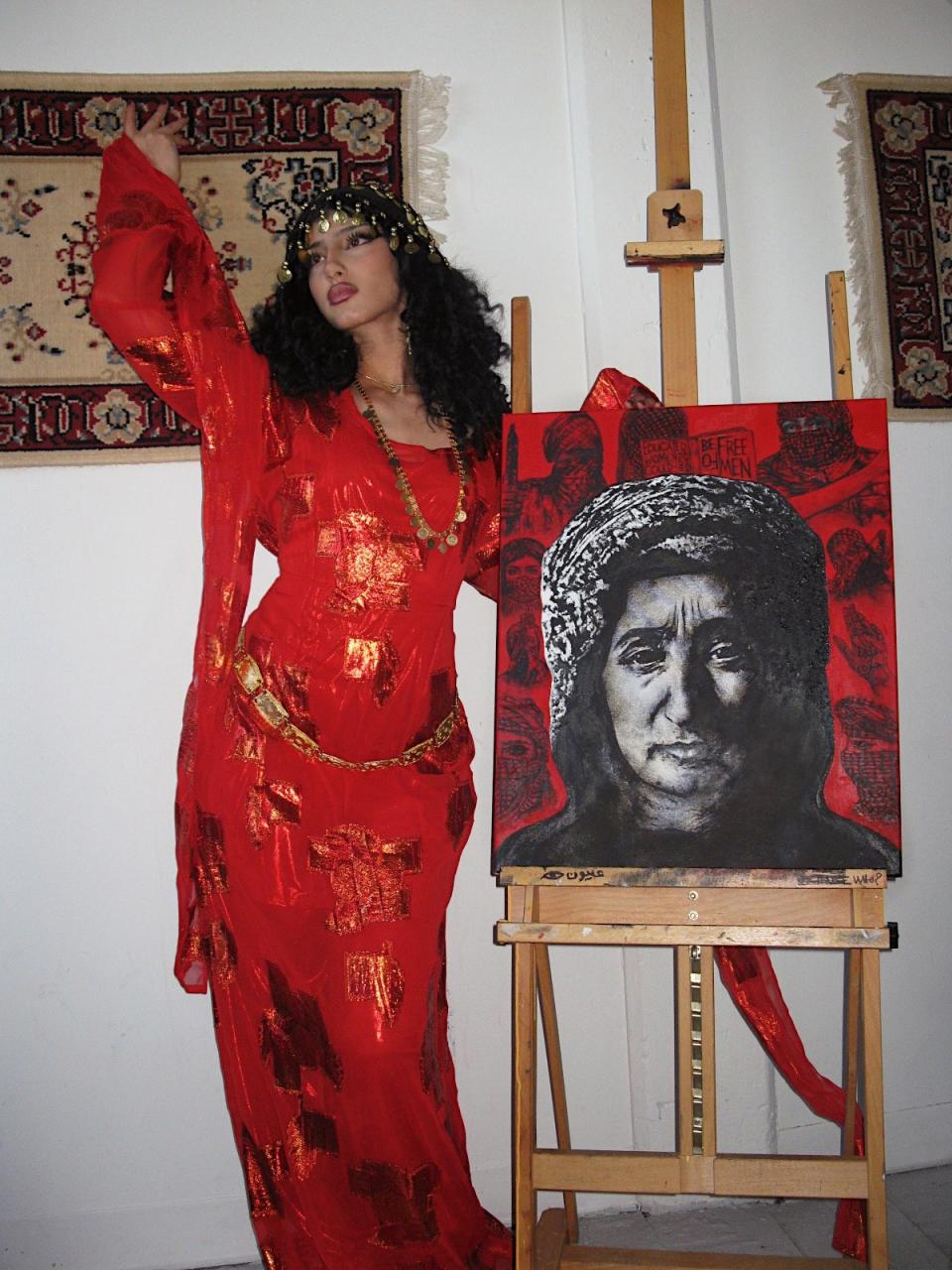
“Connecting with myself and my identity through prayer and my art are the two biggest things in my life at the moment. As an artist, I am able to physically express myself through fashion and makeup. For this year’s Eid, I hope to give more to my community and feel closer with Allah, inshallah.”
Like Salih, Laila Daoud is keen to make sure she is adequately prepared for the festivities in advance. She tends to opt for traditional tunics, or kaftans, and aligns the color scheme of her look accordingly.
“Each morning of Eid must be thought of beforehand,” shares Laila. “My outfit is steamed and ready for me the night before, and my makeup is set up as well. Before Eid, I typically shop at Sudanese boutiques that import elegant kaftans from different Arab countries. The kaftans I usually wear are long maxi dresses that are beaded with eloquent stitching and have matching belts to pull the look together. They’re my favorite to wear.”
Next to Daoud’s love for intricate fabric lies a surge of gratitude towards being able to commune with the people she cares for the most. “The night prior to Eid entails a traditional Palestinian treat called ‘mammoul,’ which our family prepares. It’s a date and walnut-filled semolina cookie that we get to share with our neighbors and other family members. That, and praying in unison with members of the community is one of the best ways to embrace Eid.”
“Leaving the house knowing that my makeup, hijab, and overall outfit complement each other gives me a great sense of strength," she said. "I believe that my self love shines brighter through my physical appearance, especially when I can show a reflection of my religion and culture.”
Muslim women have always taken pride in the process of planning for their respective holidays; and for Algerian native Iman Bou, she too believes the true essence of Eid is all in the planning.
“Just the preparation that goes behind it is what’s really special,” she says. “Whenever I celebrated in Algeria, my cousins and I stayed up all night laughing and sharing stories until it was time for us to get ready at 7 a.m. We did each other's hair and makeup to prepare for the day and look our best.”
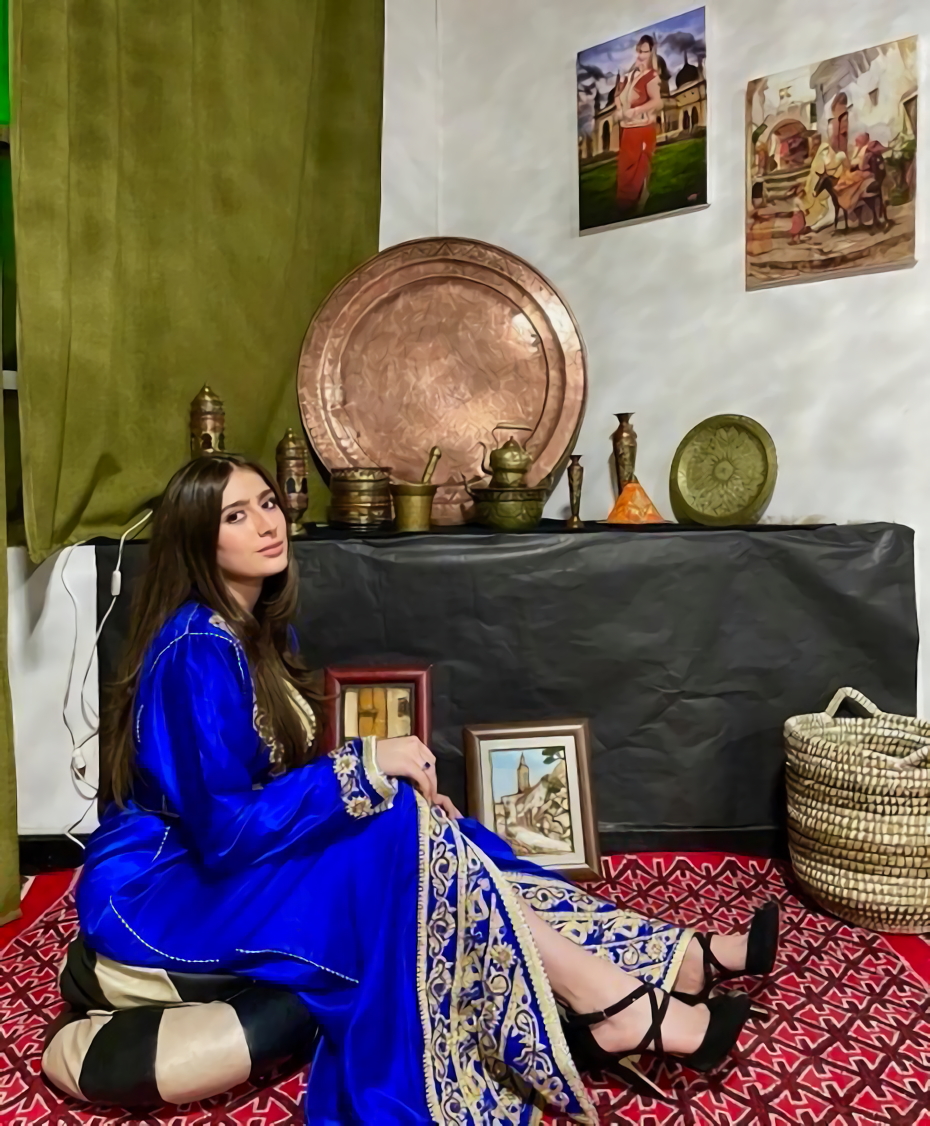
Applying henna tattoos and gold accessories have always been a ritual in Bou’s preparation. In Algeria, she says henna paste is traditionally pressed in the center or top of the hand to commemorate various celebrations such as weddings and religious holidays. While henna designs vary by region, they are typically mapped out in geometric patterns that aim to tell a story. Bou keeps a mental note of this during application and works to materialize the art within her mind.
“What has helped me connect to myself and my identity is just being true to what I believe in. It’s so important to be authentic, and fashion, to me, is all about your aura and how you carry yourself. You have to make sure that you’re wearing the clothes, and not letting the clothes wear you. It’s important that everything is cohesive and goes together as one piece. I like to go the traditional route because I feel like a lot of Algerian pieces are lovely to wear.”
“This Eid, I really want to spend time with my family and attend the mosque in the morning. Having a nice lunch at our usual French bistro is something we always look forward to. It’s really nostalgic.”
Dallas-based Eshal Syed says that growing up with high expectations for Eid has set the tone for her celebrations since she was a child; accessorizing with bangles, jhumka earrings, and flowy skirts lets the world know that she is prepared to cherish her faith and be the most comfortable in her skin.
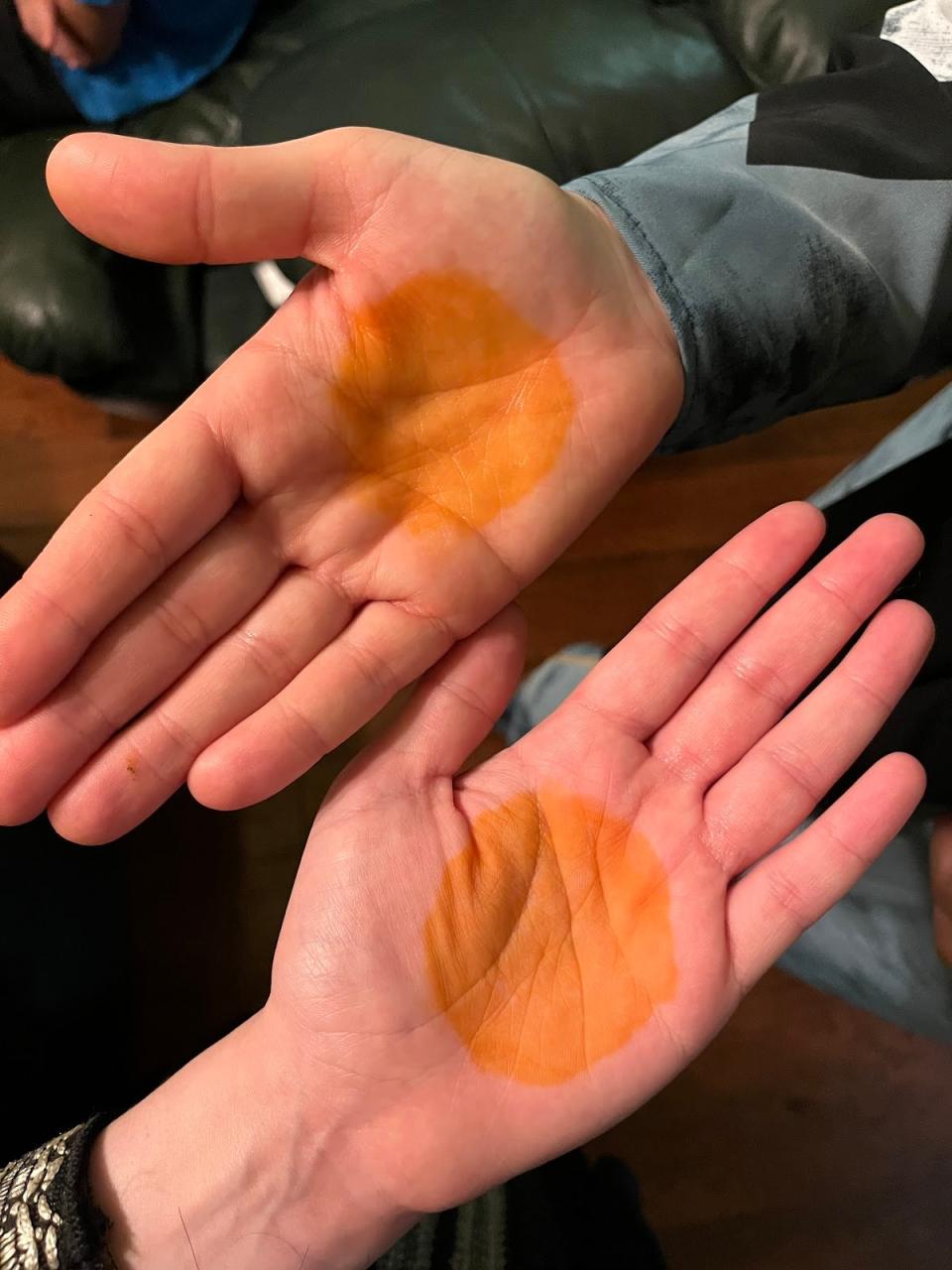
“My family had the same Eid routine for years. My mom would barge into every bedroom to make sure everyone was up on time. She had one rule for outfits- that they must be brand new and as extra as possible,” she recalled. “Because of this, I’ve always felt like a princess in my salwar kameez or lehenga. Every dress I’ve worn in the past for Eid has the most elaborate designs…Islam celebrates modesty, and during Eid I always try to embrace that aspect of my religion.”
Syed was able to recount her experiences as a young Muslim, citing that community has always been a cornerstone in Islam; she remembers how her father used to tell her to take note of the diversity that beamed in the mosque’s convention hall on the morning of Eid. “I grew up in Dallas, Texas, a city with a massive muslim community,” she said. “On Eid, groups of muslims typically gather to do a prayer and celebrate…I would see people of South Asian, Middle Eastern, or African descent and hear the variety of native languages being spoken. My father said that Eid prayer was the perfect example of how Islam is accepting of so many individuals from various backgrounds. Despite our differences, religion is able to bring us together.”
For Syed, she admits that the link towards her faith hasn’t always been linear, but the hope she has towards her community, future experiences, and friends has strengthened and reaffirmed her beliefs as she has gotten older.
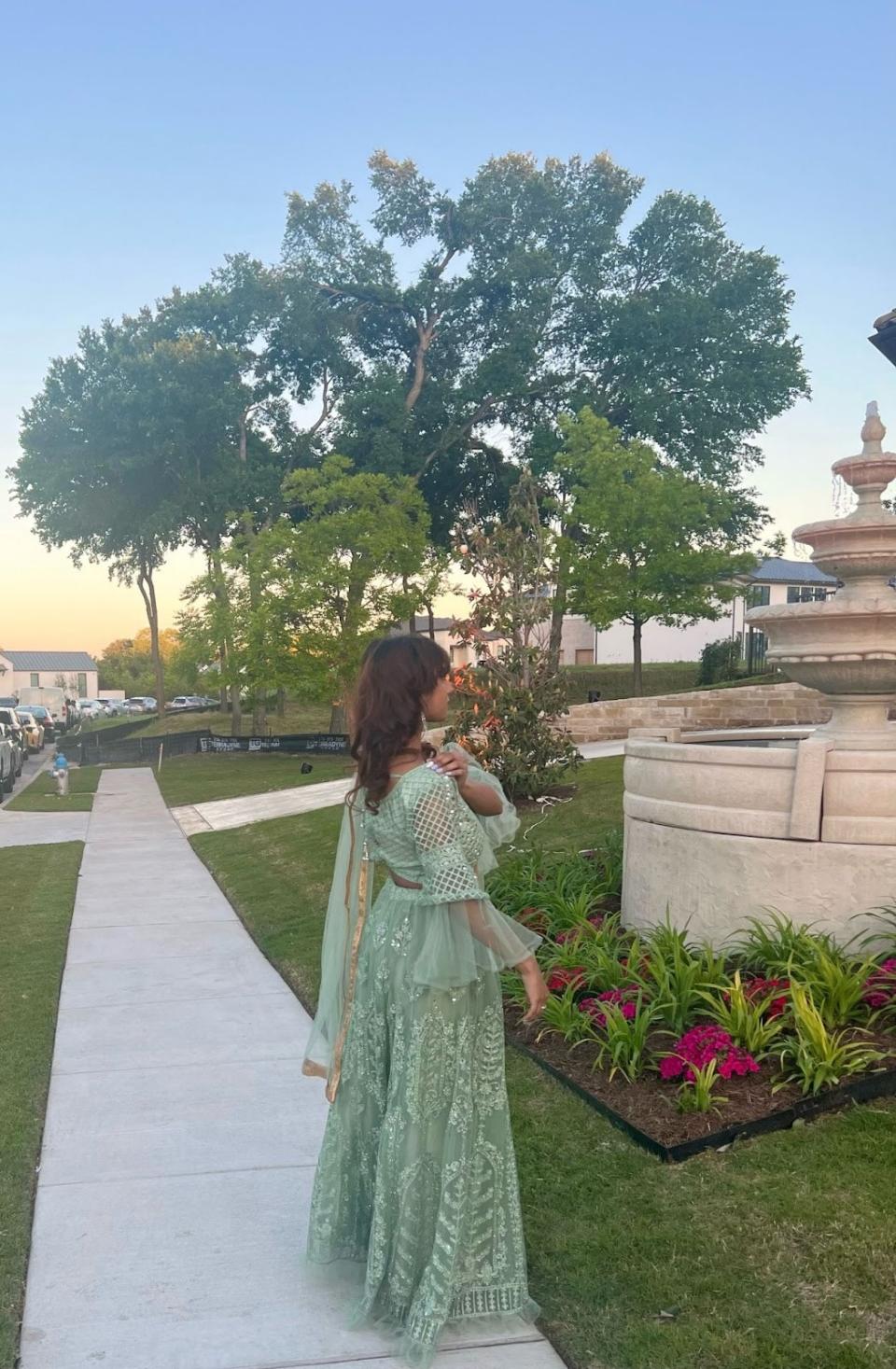
“To be honest, I haven’t always been the most religious individual — but during Ramadan and Eid, I set aside any issues that I grapple with and embrace my identity with the religion,” Syed said. “I feel my inner child sitting next to my mom during prayer as it allows me to reminisce about the times my whole family would be together for the holiday.”
“As a child, I always equated Eid to a Muslim version of Christmas. I reveled in the fact that I had an excuse to skip school. Now, Eid means so much more to me. I perceive it as a celebration of my culture that I spend with my loved ones, an opportunity to be more in touch with God, and a time to feel confident while wearing traditional clothing. There has always been something about my look on Eid that made me love my own appearance regardless of any insecurities I have. It makes me feel beautiful.”
Originally Appeared on Teen Vogue

